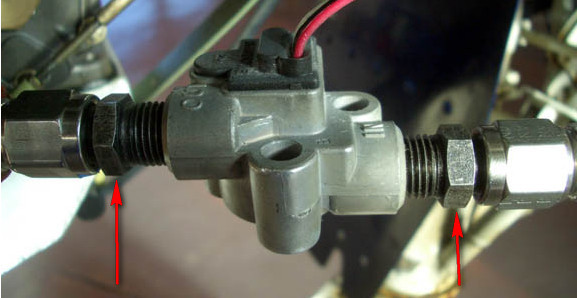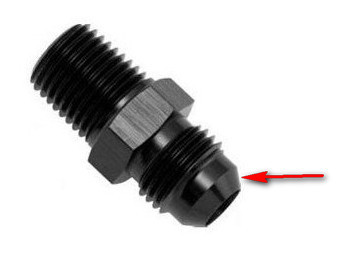My FF has gone wonky with the new panel. After start and during engine run-up it appears normal, but as power increases through 2200 rpm (approx 12 USG/hr) the FF drops to zero. Power reduction at top of climb brings FF back but the readings are inaccurate.
My avionics installers have now replaced all the wiring between the fuel flow transducer and the JPI with no effect so we think it can only be the fuel flow transducer itself or the JPI.
Changes since it worked properly: 1. Hoskins fuel flow removed (why have two?) 2. JPI sent back to factory for USB data port upgrade
Any ideas or suggestions?
This may be worth a skim read for ideas…
I have also just replaced by Floscan transducer. The old one, installed 2008, simply died, just as I wound up the power to take off, to Lausanne. The new one works perfectly. $333 plus shipping. I tried to open up the old one but it is full of resin so I am milling out the electronics on a turret mill just for fun (it’s what boyz do) to see what is underneath (the turbine, obviously).
You could troubleshoot this on the ground easily enough, with a pulse generator. The K-factor is usually about 30000 pulses per USG so you can work out the typical frequency is only a few hundred Hz. The transducer output is open-collector (the pullup resistor is in the instrument) and a generator with a TTL output, driving the gate of a BSS138 mosfet (etc) would do it, and would take only minutes to rig up.
Or I can lend you my emulator box (see the above link) which simulates about 30 USG/hr and I am sure your plane doesn’t burn that much  You will just need to wire up a mating connector (I can lend you that too) to your wiring which goes back to the instrument.
You will just need to wire up a mating connector (I can lend you that too) to your wiring which goes back to the instrument.
It does sound like the pullup inside the instrument is too weak. You could prove that immediately with an oscilloscope. But that would indicate a faulty instrument.
I only understood about three words of that! 
I do know my K Factor is 88.91 and apparently that’s because it’s a 1980’s vintage transducer. A replacement will arrive on Thursday and if that doesn’t work I’ll be down to Shoreham bothering you!
I am having to remove my Floscan flow transducer which went in a few weeks ago (removed it lunchtime today) and replace the NPT unions on it

because the ones which came with it were not machined accurately enough. In fact the ones in the above pic, blackened mild steel, are rubbish. The ones to use are stainless ones

The problem is that for fuel pipework, with no sealant or deformable washers used, the mating surfaces (arrow above) need to be really perfect otherwise there will be a small leak.
The P/N for the correct stainless steel part is, I believe, AN816-4 NPT-JIC
The other end (the tapered thread) gets PR1440 on it – another 30 quid semkit wasted to get about 1 cc… In the pic showing the whole transducer, there is no sealant, but that’s no good because to be reasonably sure of getting no leak, the tapered thread needs to be done up so tight that you risk splitting the transducer, which is just a diecast housing.
just for your info on JIC Fitting the taper of the cone must be 37deg
this is a good source in the UK very high quality f.e. the 90deg (alloy) etc are all made from forgeings not castings as some cheaper ones are
http://atecautotechnic.co.uk/en/?___from_store=de
Transducer replaced. All fine now!
Is it proof against avgas, alcohol, oil, etc, over the required temp range i.e. about -40C to maybe +100C?
The leak path out of a pipe thread is a very long small diameter tube with fuel in contact with only one end. It would take a long time for fuel to dissolve all that material, even with only marginal chemical compatibility. Locktite works fine in my experience.
A lot of things would work to seal a pipe thread in a fuel system – the traditonal solution is ‘fuel lube’ Link which is basically a non-curing fuel resistant grease. Since it doesn’t bond to the surface I’m not sure what pressure it would seal, e.g. for injected engine fuel systems, but it’s fine for gravity fed systems and the like. The big ‘no-no’ for sealing pipe threads on aircraft is using Teflon sealing tape because it can break off in the fitting, leaving residue which then plugs the line.
there is no problem with anaerobic Loctite, neither chemical stability nor a temperature up to 150 degrees for “normal” types. At this temperature the shear strength is one third of 20 degrees, normal types. The big bonus is the shear strength for your taper thread that you want in a certain orientation of the fitting. So this is the way to go, just use the grade of Loctite you require. Best do a test elsewhere – and be prepared for a surprise if you pick a high strength type like 270 . I have quite a collection of very different types for many uses, makes life so easy today. Even Lycoming, Rotax etc. use the stuff in their repair manuals.
Vic